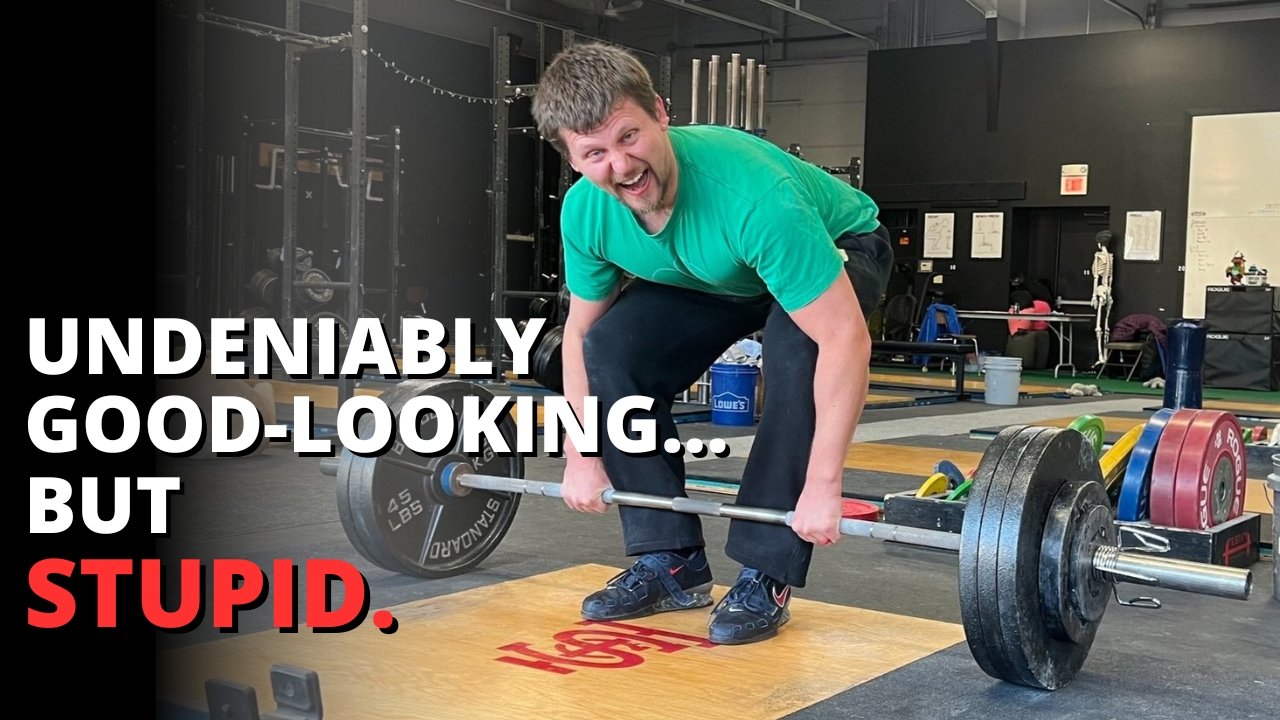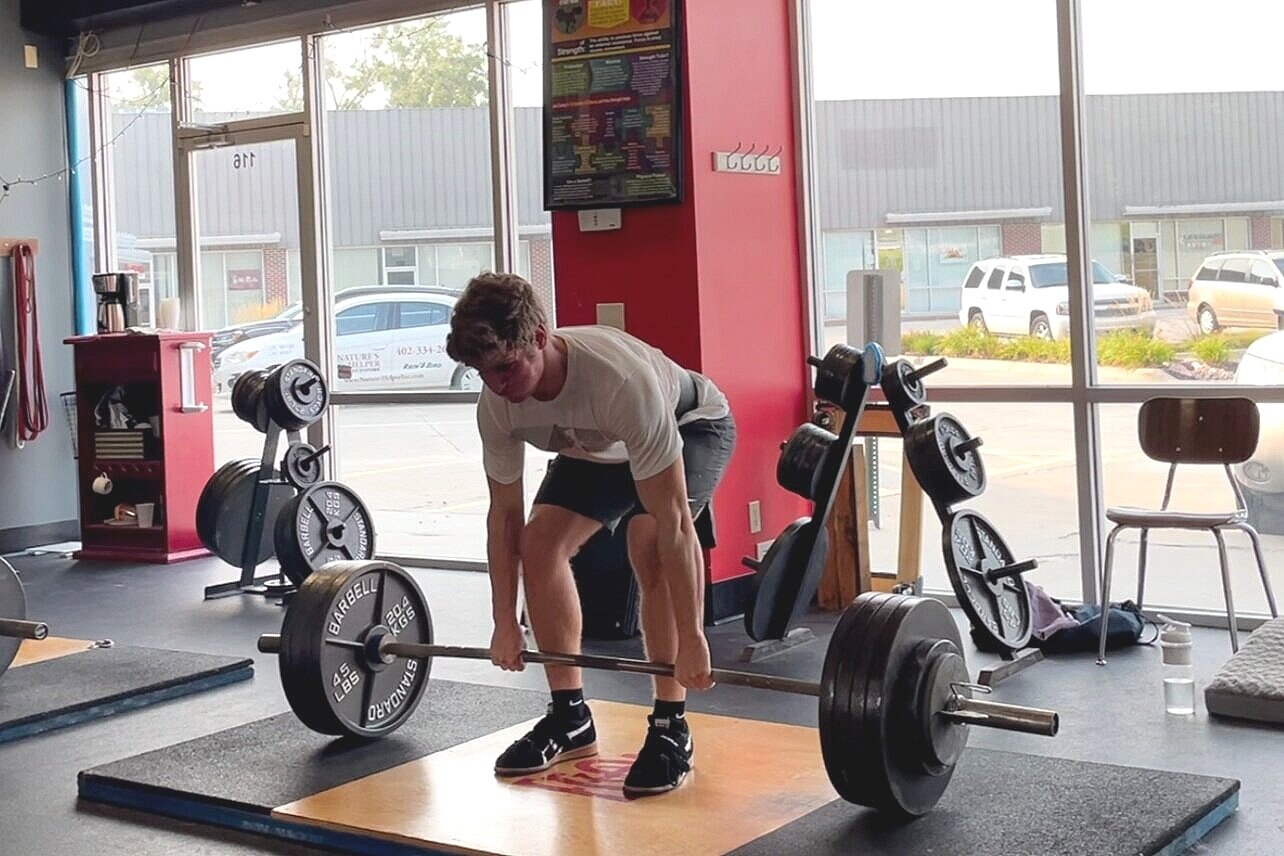The Deadlift: Follow the Bar
/This is hideous (on multiple levels). Don’t be like this fool.
Lowering the deadlift should be rather easy - after all, the tough part of the lift is already done, right? With that being said, setting the barbell down after the deadlift is locked out can be tricky for some lifters, especially new lifters.
Figure 1: How NOT to lower the deadlift. This nincompoop is trying to keep his torso vertical on the way down.
This is usually due to a misguided desire to keep the back as vertical as possible on the way down (Figure 1), although we’ve also seen it happen because someone is nervous about bending over with a heavy weight in hand.
Here’s a cue that can help simplify the process and potentially remove some nervousness: Follow the bar down.
At the top of the deadlift, you’ve already picked up the bar, which you know is the hardest part, and you were very bent over during a good portion of that process, so you also know - at least intellectually - that bending over again as you set it down should be even easier. But it’s sometimes tough to convince our bodies to follow that logic and actually bend over, so if the usual “hips back and bend at the the hips” cue isn’t working for you, just tell yourself to follow the bar down to the floor.
Figure 2: This . . . is much better. Hips back, chest down, and simply follow the bar down.
In other words, gravity will take the bar straight down to the floor, and you’re simply following the bar by keeping your hands attached to it (Figure 2).
Now, you’re not dropping the bar, but it should be relatively fast on the way down, and if thinking of the process as a controlled drop helps - at least for now - then go ahead and think of it that way. Simply follow the bar down and keep the rest of your body out of the way.
We hope this helps you get stronger and live better!
(Some links may be affiliate links. As an Amazon Associate, Testify earns from qualifying purchases.)




















